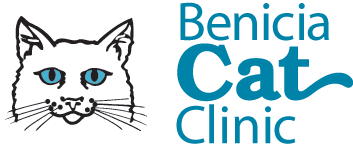Educational Articles
-
Tube feeding is important to maintain adequate nutrition and prevent liver problems in cats that are anorexic for at least 2 days. Tube feeding may be needed because of a mechanical problem interfering with ingestion of food or because of a systemic illness that is causing the cat to be anorexic. There are several different options for tube feeding. Naso-esophageal/naso-gastric intubation passes a tube down the nose into the esophagus and sometimes into the stomach. This is only suitable for short term feeding. Placement of an esophageal tube requires sedation or anesthesia as a hole is made through the skin and esophagus to pass the tube through into the esophagus. An esophageal tube can be maintained for weeks to months. A gastrostomy tube requires anesthesia to pass a tube through the skin directly into the stomach. This is beneficial for longer term feeding. A tube must be protected to prevent the cat from pulling it out. The recommended diet is administered in liquid form by a syringe several times a day. Complications are rare with clogging and inadvertent removal most common.
-
Tularemia is an infection of the bacteria Francisella tularensis and is most common in rabbits and rodents. Infection in cats occurs from ingestion of an infected animal, drinking contaminated water, or getting bitten by a blood-sucking insect. Clinical signs include enlarged lymph nodes and draining abscesses. Treatment includes antibiotics, surgical removal of any draining abscesses, and any other supportive care warranted by the cat's condition. Tularemia is a reportable zoonotic disease.
-
Tylosin is an antibiotic given by mouth or by injection in small mammals and is used off label to treat diarrhea and inflammatory bowel disease. Common side effects include decreased appetite and diarrhea. Do not use in pets that are allergic to it. If a negative reaction occurs, call your veterinary office.
-
Damage to the tympanic membrane and middle ear infections can be very painful for cats and cause a variety of clinical signs affecting the skin and nervous system. Diagnosis often requires a thorough ear examination with testing while your cat is under sedation or anesthesia. The treatment methods and prognosis depend on the nature of your cat's condition.
-
Ultra-micronized palmitoylethanolamide (PEA-um), brand name Redonyl Ultra, is a nutraceutical used to support skin health in dogs and cats. PEA-um comes in oral chewable and powder forms. It is used "off label" or "extra label".
-
Ultrasound uses the reflection of sound waves to generate an image of internal structures, allowing for identification of masses, pregnancy diagnosis, abnormal heart function and muscle size, abnormalities of the orbit, and abnormal appearance of abdominal organs. Ultrasound results can be analyzed in real time; however, assessment by a radiologist may take several days. Ultrasound is an invaluable tool to detect problems in a non-invasive fashion.
-
An umbilical hernia is a protrusion of the abdominal lining, abdominal fat, or a portion of abdominal organ(s) through the area around the umbilicus. An umbilical hernia can vary in size from less than a ¼” (1cm) to more than 1” (2.5cm) in diameter. Small (less than ¼” or 1cm) hernias may close spontaneously (without treatment) by age 3 to 4 months. If the hernia has not closed by the time of spaying or neutering, surgical repair of the hernia is recommended and prognosis is excellent.
-
Controlled substances are medications or illicit drugs that affect the central nervous system and have the potential for abuse or dependence, both in humans and in animals. These drugs are often needed to manage pain and other conditions in pets and are relatively safe when used appropriately and under the guidance of a veterinarian. Be sure you understand the risks and responsibilities associated with controlled substance use.
-
Cats exhibit a wide range of behaviors that are quite normal yet may be considered undesirable by the people with whom they share their homes. Most of these behaviors develop to satisfy an innate need. Rather than trying to stop your cat from engaging in instinctual and naturally rewarding behaviors, it is essential to provide your cat with substitute behaviors and outlets that satisfy your cat’s needs.
-
Urinalysis is an important part of any comprehensive workup or health screen. It provides information on the urinary system including the kidneys and bladder and also can support diagnosis of metabolic disease, such as diabetes mellitus.

